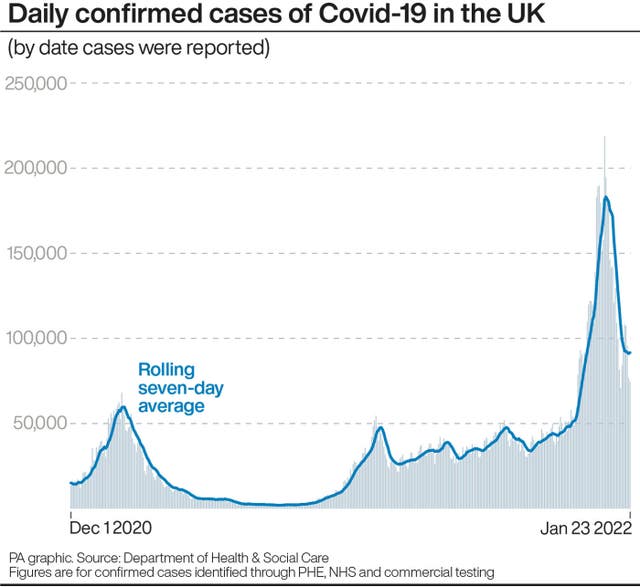New data released by the Government shows that nearly one in eight schools and colleges have levels of carbon dioxide that are too high.
In a survey of more than 4,000 schools and colleges by the Department for Education in December 2021 to evaluate the use of CO2 monitors, 12% reported that they had sustained “high CO2 readings of 1500ppm or above”.
The DfE added that most of the schools which identified high levels of CO2 in their buildings were able to solve this through “quick fixes” such as opening windows, but that 3% of schools could not solve the issue of high CO2 levels through “quick fixes or remedial building works”.
Paul Whiteman, general secretary of the NAHT school leaders’ union, said that schools were “managing a very difficult situation” when it came to ventilation, adding that it was “vital” that schools could continue to apply for CO2 monitors and raise their concerns with the Government.
“Adequate ventilation is crucial in the fight against the spread of Covid in classrooms and keeping children in school,” Mr Whiteman said.
“Schools are currently managing a very difficult situation when it comes to ventilation, not least balancing the need for good ventilation against keeping classrooms sufficiently warm for pupils and staff to be able to learn and work in,” he added.
“Clearly this is a dynamic situation and as schools get used to using the CO2 monitors, we could see more identifying issues that need addressing.
“It is vital that the Government ensures that schools are able to escalate these concerns for the foreseeable future and that they are able to continue to apply for air cleaning devices if they are needed.”

Geoff Barton, General Secretary of the Association of School and College Leaders, said: “The Government took an absolute age to respond to the fairly obvious conclusion that increasing ventilation in schools and colleges could play a part in reducing the transmission of the coronavirus.
“It is good to see that schools and colleges are making use of the CO2 monitors provided by the Government but less positive that they can only then apply for the 9,000 air purifiers it is providing to help rectify problems if they unable to improve ventilation in other ways, such as opening windows.
“With temperatures outdoors close to freezing and the obvious problems opening classroom windows creates in keeping both staff and young people warm, this is not a realistic solution to offer in the depths of the English winter.”
He added that the Government should look again at its eligibility criteria for providing air purifiers to schools, “to enable as many classrooms as possible to be used to teach students in environments which are both comfortable and safe”.
In a blog published on the DfE website in January, it said that where ventilation needs to improve in classrooms, “the first step teachers can take is to open windows and doors to improve air flow”.
“But that doesn’t mean classrooms have to be cold,” the blog added, suggesting that windows could be opened during “periods between lessons”.
On Monday, Education Secretary Nadhim Zahawi announced that new funding of £8 million from NHS England would help schools to support in-school vaccination programmes, while “air cleaning units will be provided in all classrooms and teaching spaces that need them”.
Testing, ventilation and vaccinations are our best weapons against the virus.
Professor @CathNoakes knows all about managing good ventilation in buildings, including classrooms.
She explains some of the simple steps to limit the spread of Covid in education settings.
— Department for Education (@educationgovuk) January 24, 2022
In a statement published on the DfE website, Mr Zahawi committed to delivering 9,000 air cleaning units to schools, colleges and early years settings, “up to 1,000 more than originally promised”.
As of January 21, 1,265 schools have made a “valid” application to receive a DfE-funded air cleaning unit.
Mr Zahawi said: “Face-to-face education for all students has consistently been my priority, and that is why I am pleased to further strengthen the tools available to schools to manage transmission of the virus, including funding air cleaning units for the small number of classrooms that need them due to poor ventilation, and providing additional NHS funding to free up staff time to engage with the vaccination programme for young people.
“My message remains the same as ever – testing, ventilation and vaccinations are our best weapons against the virus – keep testing, and get your vaccination as soon as possible,” he added.
The DfE survey found that 96% of schools said they had been using the monitors provided by the Government while out of the schools using the monitors, 95% said they could use them to identify “when ventilation in a room needed to increase”.
The DfE said it had delivered 353,000 CO2 monitors to schools.




Comments: Our rules
We want our comments to be a lively and valuable part of our community - a place where readers can debate and engage with the most important local issues. The ability to comment on our stories is a privilege, not a right, however, and that privilege may be withdrawn if it is abused or misused.
Please report any comments that break our rules.
Read the rules here